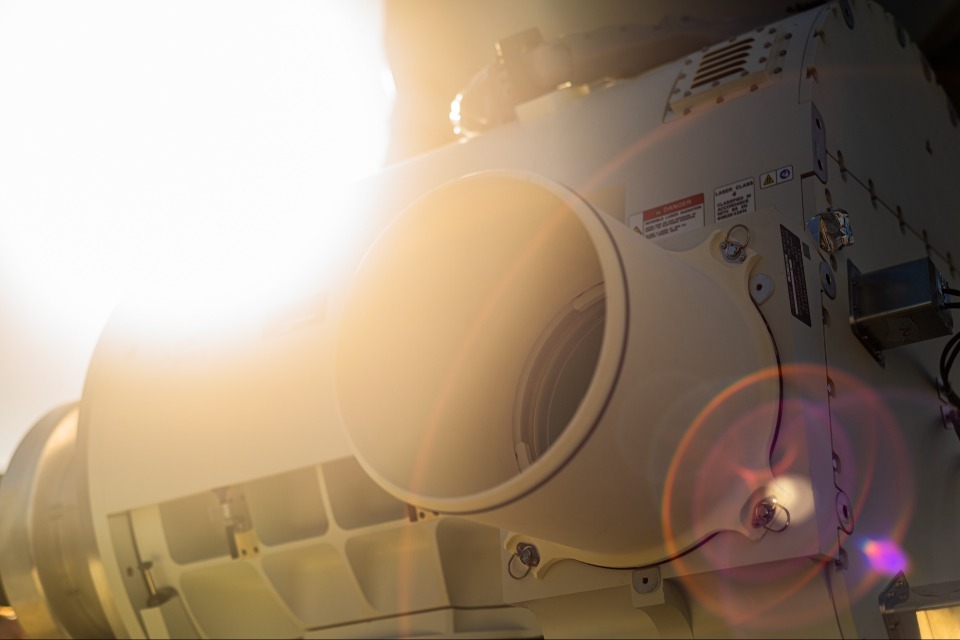
£5B Tech Boost Spurs UK Defence Innovation
More than £4 billion drive towards autonomous systems to shape UK military future and boost export potential, supporting the Plan for Change
UK troops and warships will be protected by drone and laser weapon technology through a major £5 billion investment, as the UK seeks to become the leading edge of innovation in NATO under the Strategic Defence Review (SDR) and driven by lessons from Ukraine.
The major funding package includes more than £4 billion for autonomous systems and a further investment of nearly £1 billion for Directed Energy Weapons (DEW) this Parliament – including the iconic DragonFire laser – boosting frontline capabilities while creating 300 skilled jobs across the country.
DragonFire is set to be the first high power laser capability entering service from a European nation, with the first Royal Navy Type 45 destroyer due to be fitted in 2027.
The SDR recommends that an immediate priority for force transformation should be a shift towards greater use of autonomy. To help achieve this, it says Defence must incorporate uncrewed and autonomous systems in high numbers over the next five years and make targeted investment in the development of novel directed energy weapons.
Today’s autonomous systems investment – of which more than £2 billion is new funding following the Government’s historic uplift in defence spending to 2.5% of GDP from 2027- will see autonomous systems, including drones improve accuracy and lethality for our Armed Forces, and boost UK export potential.
It comes after major announcements ahead of the SDR publication, including: the building of up to a dozen new attack submarines for the Royal Navy; up to 7,000 new UK-built long-range weapons to procured; at least six new munitions and energetics factories in the UK; more than £1.5 billion to improve the state of military housing; and more than £1 billion for pioneering technology to spearhead battlefield engagements.
The new DEW capabilities will give the UK an edge, creating low cost and sustainable alternatives to missiles to shoot down targets, such as drones, at the speed of light, reduce collateral damage and have a low-cost per shot, reducing reliance on expensive ammunition.
The systems will be tailored to the conditions in which they will operate – whether at sea, on land, or in the air – and will work alongside crewed assets, such as current and future fighter jets.
Both investments reflect the SDR’s vision for UK innovation to be driven by the lessons from Ukraine – harnessing drones, data and digital warfare to make our Armed Forces stronger and safer.
The SDR sets a path for the next decade and beyond to transform defence and make the UK secure at home and strong abroad. It ends the hollowing out of our Armed Forces and will also drive innovation, jobs and growth across the country, allowing the UK to lead in a stronger NATO as part of this Government’s Plan for Change.
Defence Secretary, John Healey MP said:
These investments will mean the most significant advance in UK defence technology in decades. We will ensure our Armed Forces have the cutting-edge capabilities they need to meet the challenges of a rapidly changing world.
We are delivering the Strategic Defence Review’s vision to put the UK at the leading edge of innovation in NATO, by backing British industry and fast-tracking the kit of the future into the hands of frontline troops.
This Government’s Plan for Change will harness the benefits of technology, create hundreds of new jobs and make defence a powerful engine for economic growth.
Chancellor of the Exchequer, Rachel Reeves said:
A strong economy needs a strong national defence. That’s why we are delivering the biggest sustained increase in defence spending since the Cold War-putting innovation and industrial strength at the centre of our national security strategy.
Additional funding for autonomous systems maximises the defence industry’s potential to drive long term economic growth and productivity – helping us deliver our Plan for Change while keeping the UK safe.
A new DEW will be created for the British Army this decade, alongside DragonFire being integrated on four Royal Navy warships, with the first ship due to be fitted in 2027, forming part of a layered air defence system to better protect UK forces while reducing collateral damage and reducing reliance on expensive ammunition.
DEW technology already supports 200 high-skilled UK jobs, with a further 300 positions to be created across the Ministry of Defence and industry partners. It’s another example of defence as an engine for UK economic growth, delivering on the Plan for Change.
In addition, a new Drone Centre will be established to accelerate exploitation of small, uncrewed air systems across all three military services, helping to deliver them to the front line faster.
The Centre will provide a central knowledge base to tackle any emerging legislative changes, develop best practice and better manage the interaction with industry. Crucially, it will apply battlefield lessons from Ukraine where drones now kill more people than traditional artillery. Detailed organisational arrangements will be developed over the coming months.
During the SDR process, 1,700 individuals, political parties, and organisations submitted more than 8,000 responses. 200 companies provided written contributions, more than 120 senior experts took part in the review and challenge panels, and nearly 50 meetings took place between the Reviewers and our senior military figures.
https://www.gov.uk/government/news/major-5-billion-technology-investment-accelerates-uk-defence-innovation-in-a-european-first


